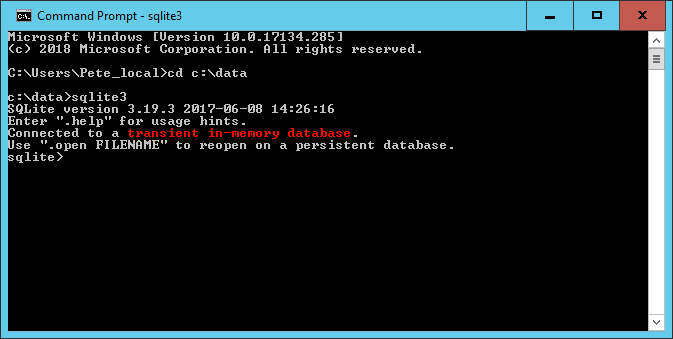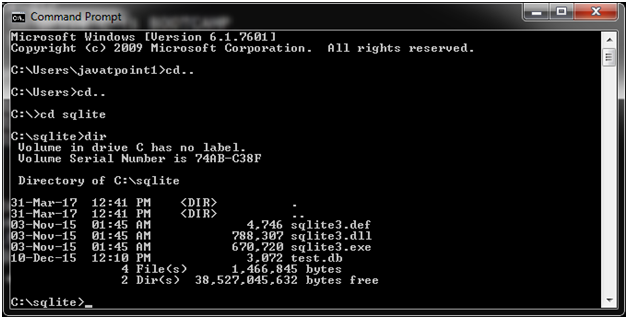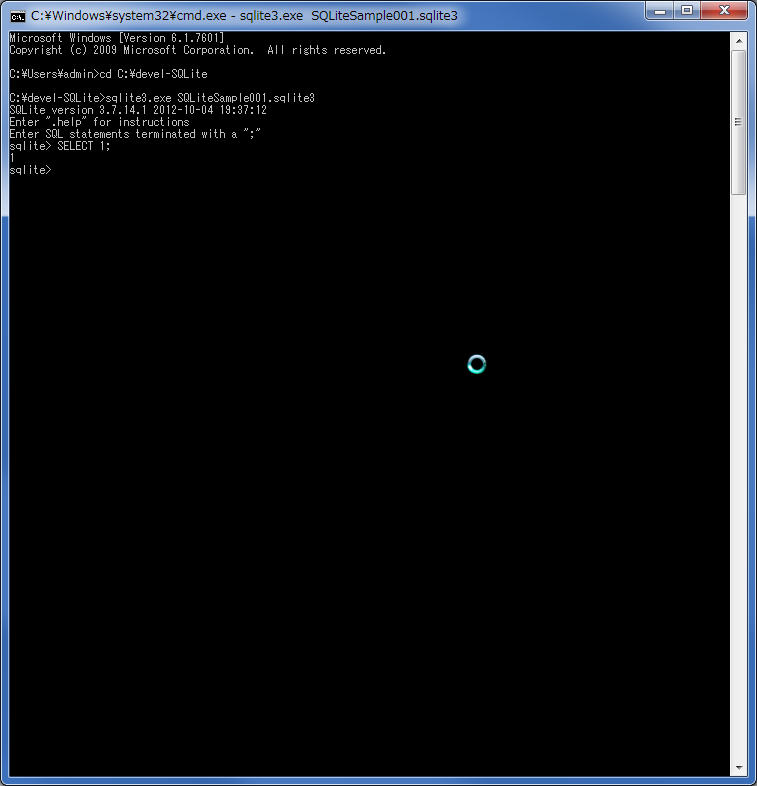

One of SQLite’s greatest advantages is that it can run on all platforms, including macOS, Windows, Linux, etc. There are Kafka connectors available if you want to use the streaming platform for data replication. However, depending on the use case you can always pay for additional extensions.
#SQLITE COMMAND LINE STUCK FREE#
SQLite, being an open-source tool, is available free of cost for all users. The data transactions carried out in SQLite are ACID compliant. It is designed to work without a Database Administrator and is very easy to set up. SQLite is self-contained, file-based, and is known for its portability, performance in low memory environments, and reliability. The Database can be accessed directly without the need for intermediation from a Host Server.
#SQLITE COMMAND LINE STUCK SOFTWARE#
SQLite Database operates from within the software that is accessing data. However, SQLite is a Serverless Relational Database Management System, also referred to as an Embedded Database. Most Relational Databases are based on the Client-Server model, which means that the Database typically runs on a server. SQLite is an open-source Relational Database Management System (RDBMS).

However, before getting into “ SQLite to MySQL”, let’s discuss both robust platforms in brief. This article will help you quickly move data from SQLite to MySQL Database. Therefore, it is highly recommended to migrate from SQLite to MySQL if you’re dealing with large volumes of data. Hence, as your business scales, your Database grows, and SQLite might not prove to be very effective for your data.

On the other hand, MySQL supports multiple users and is capable of storing a huge amount of data in the form of MySQL tables. It’s not easily scalable and lacks customizability.

SQLite is best suited for smaller Databases and it does not have any specific user management functionality, making it difficult for users to collaborate. Method 2: Converting SQLite to MySQL with Python.Method 1: Converting SQLite to MySQL with.I'm also not talking about coordinating access to a shared SQLite file using traditional methods-this is specific to NSFileCoordinator since it *seems* that is what Documents in the Cloud relies on. Note I am talking about "Documents in the Cloud", new in Sierra, and not the now-deprecated Core Data iCloud syncing Many thanks for any pointers or clarification anyone can provide! In short, what is going to stop "Documents in the Cloud" from stomping all over my SQLite Core Data store while my app is in the middle of faulting in some data from the store on disk? I can grant that writing to a SQLite store is not necessarily a problem (since calls to - can be called from a NSFileCoordinator coordinateWriting… block), but aren't reads going to be a problem? Clients of Core Data have no way to wrap incremental database reads in an NSFileCoordinator coordinateReading… block, since clients of Core Data have no control over when data will be faulted in from disk (for the most part). However, it doesn't *look* like Core Data uses NSFileCoordinator under the covers when it connects to a SQLite store-be it for faulting in data or writing out changes. NSFileCoordinator), lest your file be changed out from underneath you and you end up with corrupt data. The new "Documents in the Cloud" feature of macOS 10.12-specifically the syncing of documents in ~/Desktop and ~/Documents-seems to underscore the importance of using coordinated reads/writes (i.e.


 0 kommentar(er)
0 kommentar(er)
